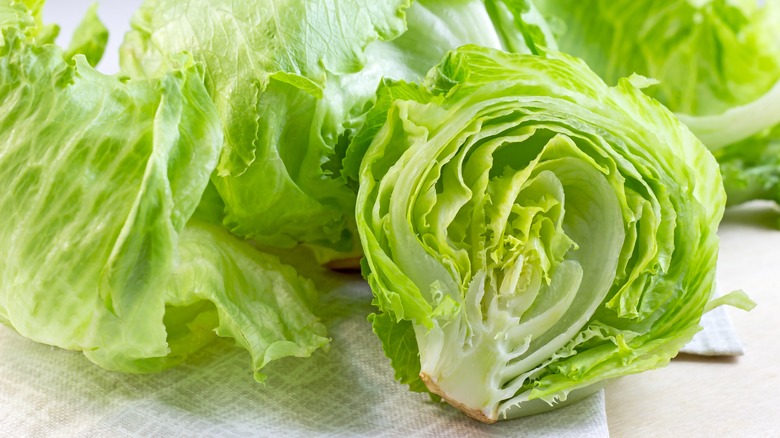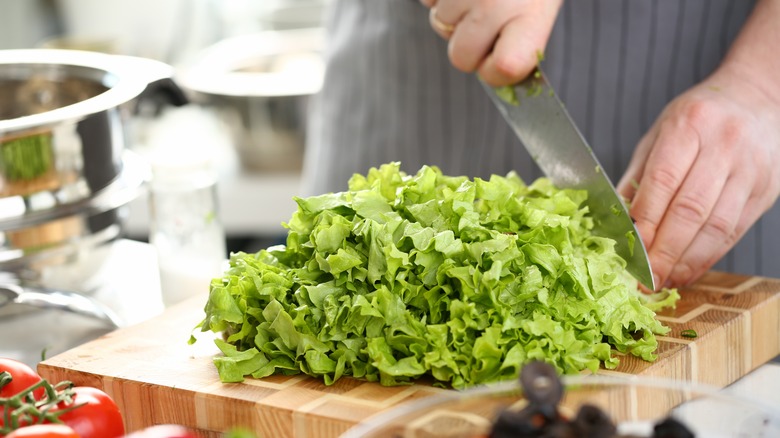Why You Shouldn't Chop Up Lettuce Before Washing It
No one wants to eat dirty lettuce – that's why it's important to prep your leafy greens in the proper order. This means don't start coring and chopping up your head of iceberg or your favorite red leaf lettuce before you wash it. If you chop it up before washing, you are just spreading gritty dirt, possible bugs, and germs around, and no one wants that. Keep your knife in its block until after your lettuce has been washed in order to limit any risk of foodborne illnesses.
In fact, FDA safety recommendations state that before peeling or cutting any produce, you need to wash it under running water. This is a critical step and should not be minimized because cutting through unwashed produce (including lettuce) forces the germs beneath the surface; however, it is important to remember washing lettuce with water isn't going to remove all germs — that's just not possible regardless of how meticulous you might be at cleaning your greens. This is because bacteria like E. coli and listeria, among others, can grow inside the leaves if contaminated water is used to irrigate the crop. It travels up the roots and becomes more than just a surface bacteria, so it's important never to eat recalled lettuce, no matter how many times you wash it. That said, water can still eliminate dirt and some germs if you use the proper washing technique.
The best technique for washing lettuce
The first step for prepping lettuce is to wash your own hands so that you don't transfer any bacteria from things you've touched. Then, remove any damaged or wilted leaves from your head of lettuce and remove the core. At this point, you're ready to separate the leaves and wash them in cold water. While you may associate warm water with cleaning, cold water is key because warm or hot water can cause your greens to go limp. Also, be sure to stay away from using any dish detergents or soaps to cleanse your lettuce. It's not needed and if you don't rinse away the soap properly from the lettuce leaves and then eat them, these greens could cause some serious diarrhea and vomiting.
To properly clean your lettuce, use two bowls of water and let the leaves soak for a few minutes in one, and then again in the second. Your goal is to have no gritty, dirty residue in that second bowl. Remove the leaves from the water and let them drain in a colander. If the water looks especially dirty during this process, feel free to switch it out and wash your lettuce again. Once your greens are grit-free, however, you are still not ready to chop. Thoroughly dry your lettuce before chopping or you are going to have a wet mess. Remember: soak, soak, drain, dry, then chop.

